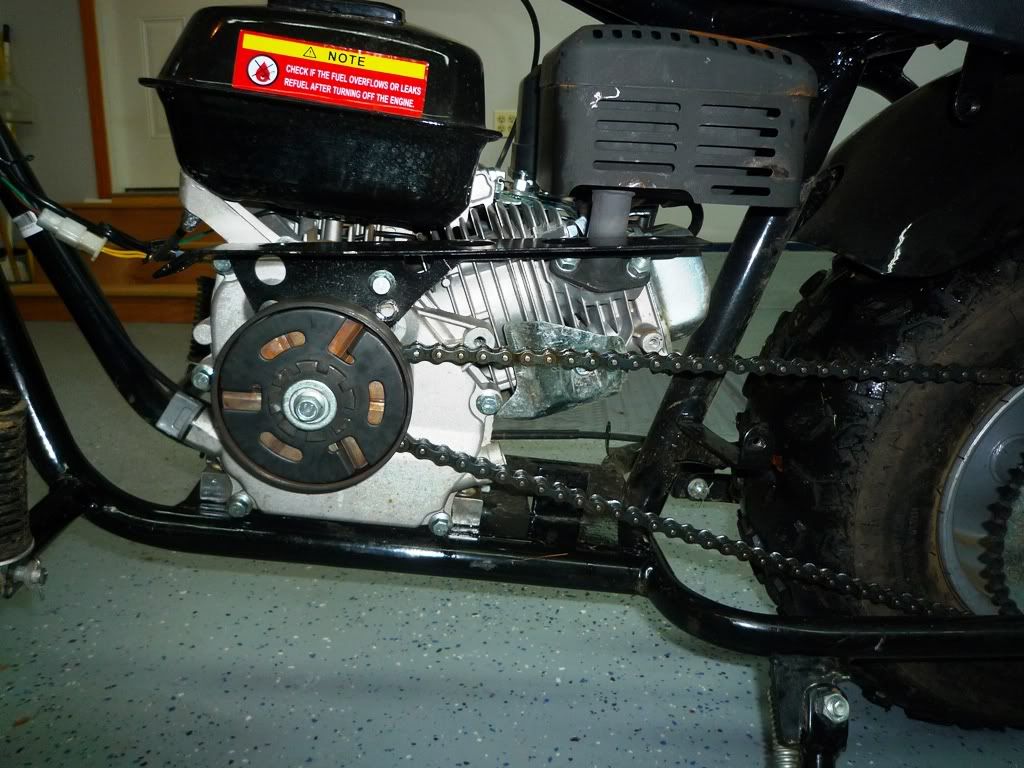I finished flipping the clutch and running new chain (5 ft total) to go from the clutch directly to the rear sprocket
Added a chain deflector in the front (don't want a broken chain finding my leg) and modified the rear chain cover by drilling one hole and adding a 2" metal extension (in this picture it only has a 1.25" extension, I have since changed it so the cover sits "level")
I also painted the chain cover with black high heat paint, never liked the look of the chrome piece
Also had to remove the OEM cover over the muffler so the chain deflector would fit
So far have only ridden it around the yard a couple times, low end suffered slightly but it still picks up good and I can already tell top speed will be a lot higher than the OEM 19MPH that I clocked with my GPS


Considering the only $$ I have into this was the new chain (already had the chain deflector, picked it up for the go kart and it was the wrong size so I bought a different one for that) it seems like a good cheap mod
Even with the deflector in place everything still sits closer to the motor then the old plastic cover (which I used to constantly hit with my leg forcing me to stop and reposition it again on the little tabs)
Added a chain deflector in the front (don't want a broken chain finding my leg) and modified the rear chain cover by drilling one hole and adding a 2" metal extension (in this picture it only has a 1.25" extension, I have since changed it so the cover sits "level")
I also painted the chain cover with black high heat paint, never liked the look of the chrome piece
Also had to remove the OEM cover over the muffler so the chain deflector would fit
So far have only ridden it around the yard a couple times, low end suffered slightly but it still picks up good and I can already tell top speed will be a lot higher than the OEM 19MPH that I clocked with my GPS


Considering the only $$ I have into this was the new chain (already had the chain deflector, picked it up for the go kart and it was the wrong size so I bought a different one for that) it seems like a good cheap mod
Even with the deflector in place everything still sits closer to the motor then the old plastic cover (which I used to constantly hit with my leg forcing me to stop and reposition it again on the little tabs)


